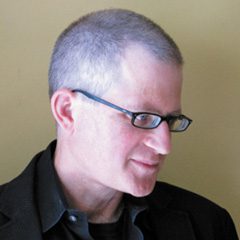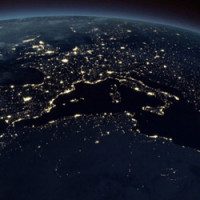A successful poem enlivens awareness of the world and unlocks the energy of life.
Though even saying so should bring on doubters. How can the miracles of birth and death, of desire and sensuality, of praise and austerity — coupled with the worst acts of violence people endure like abuse, murder, rape, terror, war, genocide — be so easily transmitted through a single poem?
Can a poem bring about a bountiful harvest? Can a poem reveal the energy of souls? Can a poem bring God into the hearts’ of humanity? Even if it could do any of these things, can a poem sustain them? And if it could sustain them, for how long?
Isn’t that the paradox of writing poetry and of becoming a poet? A poem reveals the inexpressible sources of life in its particulars — what William Wordsworth calls “spots of time.” In poetry, the cosmic is best revealed through the minutest existence. The abyss is best revealed through shallow waters. When Walt Whitman tallies the universe with his endless catalogues, they are catalogues of both things and experiences. They are full of fidelity to exactitude. They contain the brightness of evidence.
The journey to become a poet begins with images and metaphors drawn from a microscopic precision of infinitesimal fragments. This idea is parallel to the Kabbalah version of creation, as told by Rachel Naomi Remen:
“In the beginning there was only the holy darkness, the source of life. At some point in the history of things, the whole world as we know it, the world of a thousand, thousand things, emerged as a ray of light from the heart of the holy darkness. And then, perhaps because this is a Jewish story, there was an accident. The vessels that contained the wholeness of the world broke open, and the light of the world was scattered into an infinite number of sparks of wholeness that fell into all events, all organizations, all people, where they remain deeply hidden until this very day…the whole human race is a response to this accident. We are all here because we are able to discover the hidden wholeness in all of life’s events, in all organizations, and in all people. We can tend it, and strengthen it, and make it visible once again. By doing so we can heal the world back into its original wholeness. In Hebrew this task is called Tikkun Olam—Restoring the World. Healing the world is a collective human task that involves everyone who has ever been born, everyone yet to be born. So according to Kabbalah, each one of us is a healer of the world.”
Poetry does not seek to heal the world from this spiritual big bang. But poetry, as you might infer from this paradigm, is one of the shimmering lights. Poems root in the dark ground. They grow from twinkling points of particularity. They rise to the surface like the bubbling of light. They brighten and they become evanescent.
Then, that’s it.
The limits of a poem are the limits of life. Poetry is better at conjuring what can be measured more than conjuring all that is measureless. The limits of the lyric imagination are like birds rising from the branches in Christian Wiman’s poem, “From a Window”:
Incurable and unbelieving
In any truth but the truth of grieving,
I saw a tree inside a tree
Rise kaleidoscopically
As if the leaves had livelier ghosts.
I pressed my face as close
To the pane as I could get
To watch that fitful, fluent spirit
That seemed a single being undefined
Or countless beings of one mind
Haul its strange cohesion
Beyond the limits of my vision
Over the house heavenwards.
Of course I knew those leaves were birds.
Of course that old tree stood
Exactly as it had and would
(But why should it seem fuller now?)
And though a man’s mind might endow
Even a tree with some excess
Of life to which a man seems witness,
That life is not the life of men.
And that is where the joy came in.
Isn’t Wiman addressing the corporeal incarnation of knowledge in the world? Even when he feels the spirit of doubt, of skepticism, of grief, of anger, of despair, his imagination makes repair: “That life is not the life of men. / And that is where the joy came in.”
 On our behalf, Wiman witnesses the continuousness of living. His revelation, if that’s what it is, becomes like a nest that readers can gather in, in which we can touch knowledge, touch metaphor, be enclosed and momentarily surprised by what John Keats calls a “fine excess.”
On our behalf, Wiman witnesses the continuousness of living. His revelation, if that’s what it is, becomes like a nest that readers can gather in, in which we can touch knowledge, touch metaphor, be enclosed and momentarily surprised by what John Keats calls a “fine excess.”
And this too: Wiman’s understanding of the images he encounters allows us, as readers, to understand and share the breakthrough emotion that concludes the poem. Out of grief comes the presence — against all expectations — of a sudden joy.
A brilliant poem like “From the Window” reveals wonderfully how you can connect, in your poems, to the essence of self alongside the buzz of modern life.
The elements of place, of occasion, of communion, and of rebirth are central to the experience of Wiman’s poem and of writing poetry. In “From the Window,” there is the home from which the window is looked out of. There is the sanctity of the event that comes into view for the poet. There is the sibilation of the “excess” in the communion among tree, flock, and the isolated poet. And there is a sense of the womb, too — a matrix of being. This pattern of observed and felt essence exists outside of exact experience but inside the poet’s capacity to connect the real with what is universal and also analogous. I see this connection expressed in Wiman’s phrase, “And that is where…”
So, after the “joy” comes in, we find ourselves in the unutterable after-hum of the poem where there resides a resonating connection between poet and reader. It’s there, in the purr of white space, that we are offered an opening to pass from the clarity of living to the clarity of understanding the metaphor. That space is like that drowsy time when your dreams merge with conscious awareness: you become open to patterns of experiencing nature, you can hear voices and distant echoes, and at the same time you are aware of the bed, the darkened skies, the reverberations of the living house, the dog asleep on the floor.
Being alert to this kind of openness — and creating poems with this kind of openness — is how you become a poet.
This passing back and forth of the offering between the imaginary and the real, between the literary and the literal, the dream and the conscious self, is the sharing of living clarity between poet and reader. Poetry’s capacity to forge this passage is inexhaustible. The reader’s capacity to be nourished by the poet’s vision found there is inexhaustible too. There’s a unitary circulation between poet and reader. The poet dwells in the gap between dream and waking, and the reader is offered entryway to become alive and enlivened.
This passageway offers access to a landscape of referring images and metaphors. Your poem’s geography of particulars — its hills of narrative, its avenues of social identity, its villages of occasion and commentary, its glorious relationships and communities, and so on — should inspire connection between poet and reader. A poem’s insights signify abundance even within the scope of its own limitation: “Of course I knew those leaves were birds.”
By reading your poem, a reader relives what you first created and recovered. But, remember, a reader brings an independent set of images and metaphors to her reading also. Reading a poem is like acclimating to a new geography of particulars. Once acclimated, reading a poem offers a new way to see the modern world. To reach a reader you’ve got to realign her images and metaphors with your poem’s.
In this sense, you can se how the insight from Christian Wiman’s concluding phrase of “And that is where…” acts as an inspiration for the reader (as much as for the poet) that transcends time and occasion.
When you create this understanding in your writing (and when you experience it as a reader), you are given the opportunity to exist inside confluences of images and ideas for a short time. By doing so, you are writing your way into modernity and defining your time on earth. You are recovering and passing forward what you have witnessed. Even though, for most of the poetic experience, meaning might be “beyond the limits of [your] vision,” you are existing in this state of unknowing — and your awareness borders on a new valley of knowledge like dream bordering on waking.
From there, you can cross the bridge back to the living world with the new knowledge gained from writing your poem.
Yes, this is momentary knowledge. It is transitory knowledge. It is alternate, perishable, and volatile knowledge. Yes, this is like a blinking light of knowledge. But all of that is the knowledge we think of as the knowledge of poetry.




